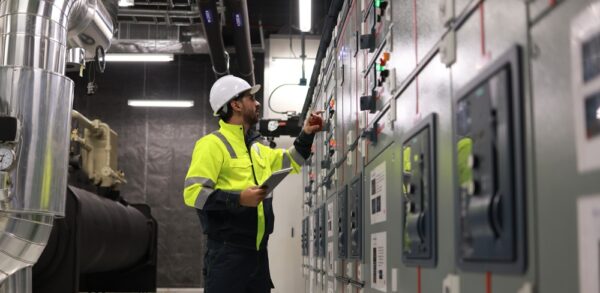What Happens When Power Supplies Fail Mid-Sequence?

A power supply failure during scheduled downtime means ordering replacement parts and waiting for the next maintenance window. But when power dies in the middle of an active production sequence, the consequences multiply exponentially. Equipment doesn’t just stop running — it stops wherever it happens to be, often in positions that create mechanical damage, data corruption, and safety hazards. The difference between a clean shutdown and a mid-sequence power loss can determine whether you’re looking at a simple part replacement or weeks of recovery work across multiple systems.
When power cuts out during active operation, the effects ripple through interconnected systems in ways that planned shutdowns never create. Here’s what actually happens when the lights go out at the worst possible moment:
- Servo motors lose position and crash into mechanical limits: Without controlled deceleration, moving axes continue until they hit hard stops. This can damage ballscrews, gearboxes, and mechanical assemblies that weren’t designed for sudden impact loads.
- PLCs lose their place in active programs: Control systems running complex sequences have no memory of where they were when power failed. This leads to corrupted process states that require manual intervention to restore proper operation.
- Emergency stop cascades trigger across interconnected lines: Safety systems designed to protect individual equipment often shut down entire production areas when one system loses power unexpectedly. This multiplies downtime beyond the original failure point.
- Hydraulic and pneumatic systems lose pressure without warning: Actuators, clamps, and lifting mechanisms release loads suddenly when power-driven pumps and compressors stop. This creates serious safety hazards for nearby personnel and equipment.

- Temperature-sensitive processes go uncontrolled: Heating elements, cooling systems, and thermal management equipment lose regulation during power failures. This can ruin batches of product or damage temperature-sensitive components.
- Material handling systems drop or jam loads: Conveyor belts, robotic arms, and automated guided vehicles stop mid-motion. Products or materials often end up in precarious positions that create cleanup challenges and potential damage.
- Communication networks fail and isolate devices: Fieldbus systems, Ethernet networks, and other communication infrastructure lose connectivity. Individual devices become unable to coordinate with the broader system even after power returns.
- Data logging and quality systems lose critical information: Process historians, quality databases, and traceability systems lose data about products in-process when power fails. This creates compliance issues and quality control gaps.
- Safety systems may fail to engage properly: Some safety mechanisms require power to activate. Mid-sequence failures can leave equipment and personnel in vulnerable positions without proper protection.
- Restart sequences become complex coordination challenges: Bringing systems back online after mid-sequence failures requires careful synchronization to avoid equipment conflicts. Teams must verify positions and ensure all subsystems are ready for coordinated operation.
Power supply failures are inevitable, but planning for failure timing makes the difference between manageable downtime and catastrophic damage. Mid-sequence power loss requires protection strategies that go beyond simple backup power — systems need graceful degradation capabilities, position retention, and coordinated restart procedures. The facilities that recover fastest from power failures are those that design their systems to fail safely, not just to run reliably.
